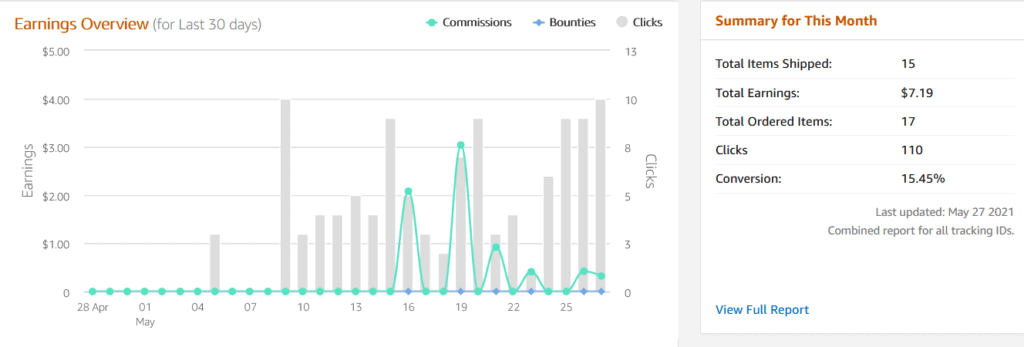
Whether you’re an experienced writer with a bunch of projects under your belt or a new writer struggling to stabilize your income, chances are that if you aren’t writing, you aren’t making money. For the most part, the writer’s career is one tied to active, rather than passive income.
As a copywriter or freelance writer, you’re usually paid by the hour, by deliverable, or on a retainer basis. Either way, in some way your income is directly tied to your time spent writing. Before we go any further, I want to say that this isn’t a bad thing.
There’s a new obsession in the personal finance world with “passive income,” but let’s get real for a second: if you want to exponentially grow your wealth and net worth, the best and fastest way to do so for 99% of people is by increasing your active income.
That said, there are more opportunities than ever for writers (and, frankly, for everyone) to make passive income from their skills. Whether you’re just looking for some extra pizza money, or for a way to decouple your income from your precious time and cover some of your bills on autopilot, I’ve got some unique solutions for you below.
Here are my 5 favorite ways for writers to turn their words into sweet, sweet passive income.
Passive Income for Writers | Top 5 Strategies:
1. Start a Blog
The majority of these tips are going to involve you having your own brand, blog, website, etc. So if you’re a writer and you don’t have these things…. it’s time to get started. I know this can feel intimidating. But there’s good news: your website doesn’t have to be about your writing business (but it can be).
I find that too many writers get stuck in this “just a writer” box and are afraid to build a brand outside of their writing persona. Yet all of the writers I know are fascinating people with a variety of passions, interests, and deep areas of expertise. What you want to do is hone in on one of these things, and build a website or brand around a specific niche.
The site you’re on right now is an example of this. I’m a writer, I know about writing, and I share my knowledge and experience… and I give away 90% of what I know for free. But your website can be about nearly anything that is somewhat monetizable, and that you have expertise in.
For example, I also built a blog about guitars, which gets WAY more organic traffic than High Impact Writing:

If you’re a copywriter or freelance writer, I’m sure you’ve written blogs or articles for clients. Ideally, you’d also have SEO experience (if not, get on YouTube and watch everything you can find from Income School).
What if you used your well honed writing skills to build your own independent brand – to craft engaging content in a niche that you have deep expertise in? What if you used your powers for yourself? I’ll tell you: if your content is good, and you learn some basic SEO, traffic will eventually start rolling in from search engines.
Be warned: the content and the waiting is the hardest part, and no matter how good you are, this takes a while. I’m talking upwards of a year. This is, of course, the ironic paradox of passive income: it takes a ton of active work upfront.
But don’t worry, I’ve got more good news: when you finally have some killer content and traffic, the monetization techniques that follow are relatively simple.
The next pieces of advice will run in a kind of order: from strategies of “least resistance” to those that are a bit more challenging and time intensive.
2. Run Ads on Your Blog & Website
Now that you’ve built a blog, one of the easiest ways to get it to cash flow is by serving ads on your website. Obviously, you don’t want to run so many ads that you scare people away. We’ve all been on websites like that before (and chances are, your visit didn’t last very long). But if you run a small amount of ads that are placed in areas that aren’t super annoying, most of your readers are not going to mind.
It’s worth mentioning that you’ll need to hit a certain “critical mass” of website page views in order for this method to have a decent ROI. Once your website is getting upwards of 1,000+ pageviews a month, it’s time to throw some ads on there.
There are two good ad networks for smaller blogs without a metric ton of pageviews. If you’re getting between 1,000 and 10,000 pageviews a month, I recommend either:
Google AdSense has very little barrier to entry. You could start running it on your site on day one but again, your earnings won’t be noteworthy until you hit the 1K+ pageview/month milestone.
Once you get closer to the 10K pageview/month mark, you can apply to Ezoic. The main advantage here is higher payout ratios compared to Google AdSense.

I run Ezoic on my acoustic guitar website, and am averaging around $100 a month in earnings. My site is less than a year old, so the earnings will only be going up from here.
Is this life-changing money? Of course not! But if I had a choice between making $100 a month for the rest of my life completely passively, and not making that money… I’d take the $100/mo. And again, this figure is only going to get higher. It typically takes at least a year for Google to start taking new websites seriously and promoting your blogs in the SERPs. So I expect this figure to increase exponentially in the coming months.
Also: this is only one monetization method for your blog. Earnings start compounding when you incorporate more than one monetization method, because you begin to essentially produce multiple income streams from the same assets.
3. Amazon & Other Affiliate Marketing Programs
Affiliate marketing is when you use your own brand to promote the products and services of other businesses. One of the most popular ways of doing this is by promoting Amazon products.
Are there products that are immensely helpful in your niche, that your readers would love to know about? Tell them! You are helping the end merchant (Amazon) the consumer (your readers) and yourself. It’s a no-brainer.
Here are my earnings in the last month from just ONE blog post I made about my favorite guitar strings:

I’ve got $7.19 coming my way just from helping my readers experience my favorite guitar strings. And this money will keep coming in month after month. The number only stands to increase, like the ad payouts, as traffic to my website increases.
And again: this is from affiliate marketing for ONE product from ONE blog post in ONE month… on my website that gets less than 10,000 pageviews a month so far. So again, this figure is on track to expand exponentially.
You can get started with the Amazon Affiliate Program here.
Update 10/27/21
My Amazon affiliate earnings are now averaging more like $15-30 a month. A nice improvement:

4. Launch Your Own Books & Info Products
Digital info products have the potential to be your greatest money maker. This is because the margins are unbeatable. Ad networks will pay you out a couple cents per site visitor, Amazon and other affiliate programs give you a small percentage of each sale… but with info products, you’ll net everything or the vast majority of the cost for each product you sell.
The best thing about info products is that there are tons of varieties you can choose from. So you can decide to create something that really emphasizes your strengths. I’m a writer (obviously) so I wrote a book on acoustic guitars:
But you don’t have to write a book! You can publish a video course on Udemy or do an audio course or audiobook. Depending on your niche, you could also offer consulting services, lessons, or other more “service-based” offerings (obviously this is less “passive”).
But the point remains: there is a lot of opportunity here, and enough flexibility for you to create a helpful product in whatever format you want.
5. Collect Copywriting Royalties
If you’re in the direct response copywriting world, it’s not uncommon for writers to be paid in royalties. This is somewhat similar to affiliate marketing: for every product sale that results from the offer or sales letter you helped write, you can be paid out a small commission or royalty.
The caveat with this is that you must have immense trust in the client that is going to be paying you. They could easily lie about sales, not pay you at all, pay for a few months and then ghost, etc. But if you can find a client who you have a great relationship with, and write a sales letter that absolutely crushes, this can be a very lucrative opportunity.
Even if you’re not in the direct response world, there are ways to incorporate this concept if you just think outside the box. One of my very first writing gigs was blogging for a supplement company on their website. My client and I agreed that I could simply use affiliate links in the blog posts I wrote for them. Whenever a customer purchased through the links, I received a percentage of the final purchase. This is also a nice way of tracking how many sales your blogs are producing.
Again, the key is to find a client you trust enough where a pricing model like this will work. But they’re out there… Pitch some people and you may be surprised!

